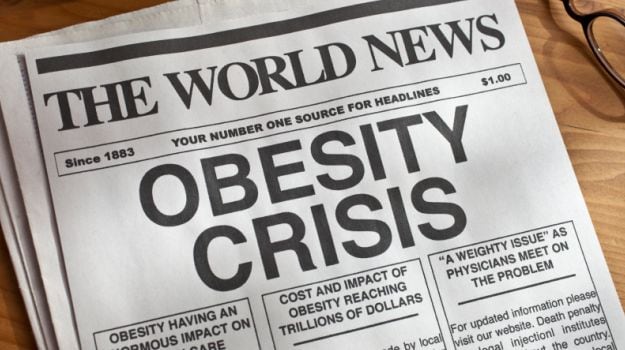A startling increase in rates of obesity in the past 40 years means the number of people with a BMI of more than 30 has risen from 105 million in 1975 to 641 million in 2014, the study found. More than one in 10 men and one in seven women are obese.
BMI is calculated by dividing a person's weight in kilograms by their height in metres squared, and is an indication of whether a person is a healthy weight. A BMI score over 25 is overweight, over 30 is obese and over 40 is morbidly obese.
"The number of people across the globe whose weight poses a serious threat to their health is greater than ever before," said Majid Ezzati, a professor at the school of public health at Imperial College London.
"And this epidemic of severe obesity is too extensive to be tackled with medications such as blood pressure lowering drugs or diabetes treatments alone, or with a few extra bike lanes."
To try to make a real difference, Ezzati said coordinated global steps were needed, including addressing the pricing of healthy foods versus unhealthy foods, or taxing high sugar and highly processed foods.
Yet excessively low body weight remains a serious public health issue in the world's poorest regions, the study's authors said, and rising global trends in obesity should not overshadow the problem of many people not getting enough to eat.
In South Asia, for example, almost a quarter of the population is underweight. In Central and East Africa, about 12 percent of women and 15 percent of men are underweight.
The study, published on Thursday in The Lancet medical journal, involved the World Health Organization and more then 700 researchers worldwide. It analysed data on weight and height from nearly 20 million adults from 186 countries.
It found that over the past four decades, the average age-corrected male BMI rose to 24.2 from 21.7, and in women rose to 24.4 from 22.1.
This is equivalent to the world's population becoming on average 1.5 kg heavier each decade, the researchers said.
They predicted that if these global trends continue, 18 percent of men and 21 percent of women will be obese by 2025.
Other key findings of the study were that:
* Japanese adults had the lowest BMIs of all high-income countries, while American adults had the highest BMIs.
* More obese men and women now live in China and the United States than in any other country.
* The lowest BMIs in Europe were among Swiss women and Bosnian men. Men in Britain had the 10th highest BMI in Europe and women the 3rd highest in Europe.
* Morbid obesity, where a person's weight interferes with basic physical functions such as breathing and walking, now affects around 1 percent of men and 2 percent of women. In total, 55 million adults are morbidly obese.
(c) Thomson Reuters 2016





